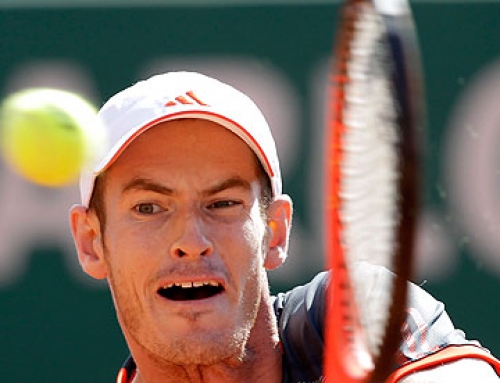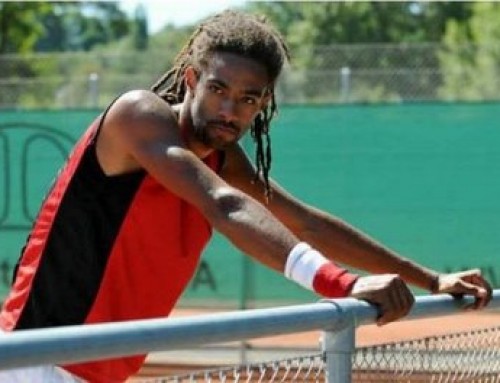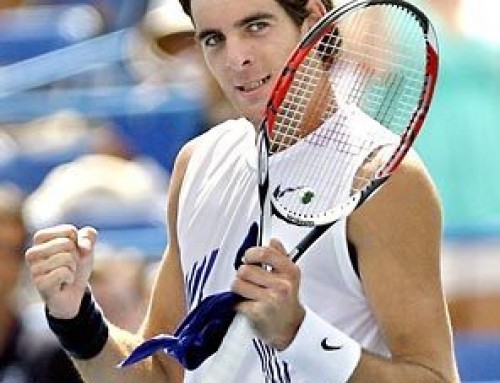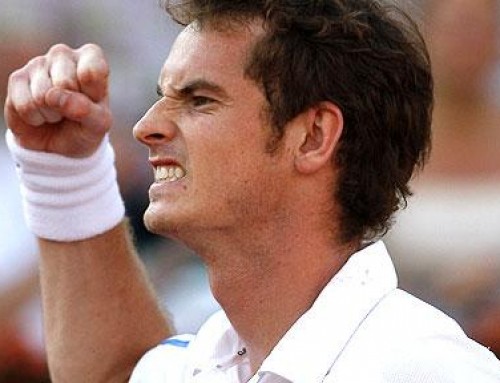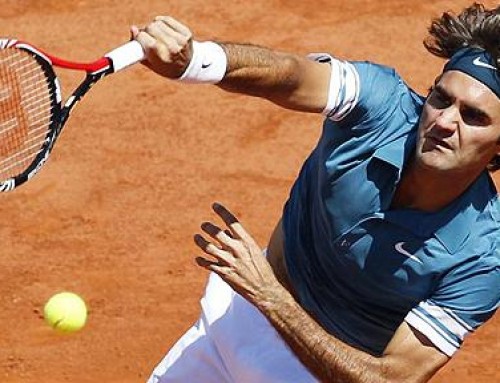Commentators recently pointed out that Andy Murray plays “classic defense”. This is far from the truth.
Classic defense was predicated on getting the ball back one more time. Arantxa Sanchez-Vicario was a superb classic defender.
She didn’t beat her rival, Steffi Graf, often, but when she did, it was due to her speed and ability to get every ball back. She forced Steffi to hit one more shot. Everyone knew Steffi hit much harder than Arantxa.
Arantxa was a rabid retriever, but she couldn’t dictate play with power. If Graf hit a powerful forehand, Arantxa might moonball in return, or hit a forehand slice. Anything to stretch the point to another shot. That was classic defense, and Arantxa played it during the shift to power tennis in the women’s game.
In the men’s game, watch some classic matches, like the Pepsi Grand Slam Challenge on Tennis Channel or at the website. Watch as Borg plays Connors. Borg wasn’t interested (or entirely capable) of hitting winners. The racquets were too tiny to make it a reliable way to win matches. Borg’s defense was predicated on high topspin shots and his uncanny ability to hit them one more time than his opponents.
Oddly enough, the forbear of the modern defense might be Pete Sampras. Recall his classic matches against Andre Agassi. Agassi would strike his power forehand wide to Sampras’s forehand. Against most players, a weak return would surely follow, one that Agassi would pounce on. Sampras, however, had mastered the reverse forehand, the forehand where you follow-through above your head. Sampras would track the ball as he moved to his right, and buggy whip an angle even bigger than the one he received, leaving Agassi dumbfounded staring at the ball that just went by him.
It wasn’t long that other players began to imitate Sampras, realizing the importance of hitting a wide angle shot well. Nadal, of course, is the king of the reverse forehands. It’s so hard to rush Nadal because he can buy a split second more time with the reverse forehand.
The key aspect of today’s defense is the passing shot. Today’s players, many with two-handed backhands, can flick a shot either up the line or sharp crosscourt, even when severely pressed. As good a striker of the ball as Nadal is, when he comes to net, a good passer has a decent chance of getting a ball by him. Nadal’s success at net usually comes from the sneak approach when a player is struggling to get to a ball and Nadal swoops in for the volley.
Indeed, the decline of serve and volley can be attributed to the improvement in today’s players ability to pass. As good a serve and volleyer as Federer was, he had to abandon this strategy because players were making it too difficult to approach. When was the last time you saw Nadal really struggle returning serve? Sampras’s opponents routinely whiffed returns, unable to handle his pace. Perhaps the next great player will be one that both serves well and hits off the ground well, but these days, you don’t need a fantastic serve to play at the top, at least, not a Sampras-like serve.
The key to a great defensive pass is a short flick of the wrist that favors positioning the ball accurately over sheer pace. It helps to have two hands on the backhand to hit this shot, but one-handers like Federer have mastered a one-handed backhand flick as well. Today’s players have learned to deal with an incredible number of scenarios, no matter how unlikely, and much of that is learning the modern defense.
Next time you watch a pro match, pay attention to how well players play when they are pushed in difficult spots. This is where today’s top pros really excel.



